TOY BOX
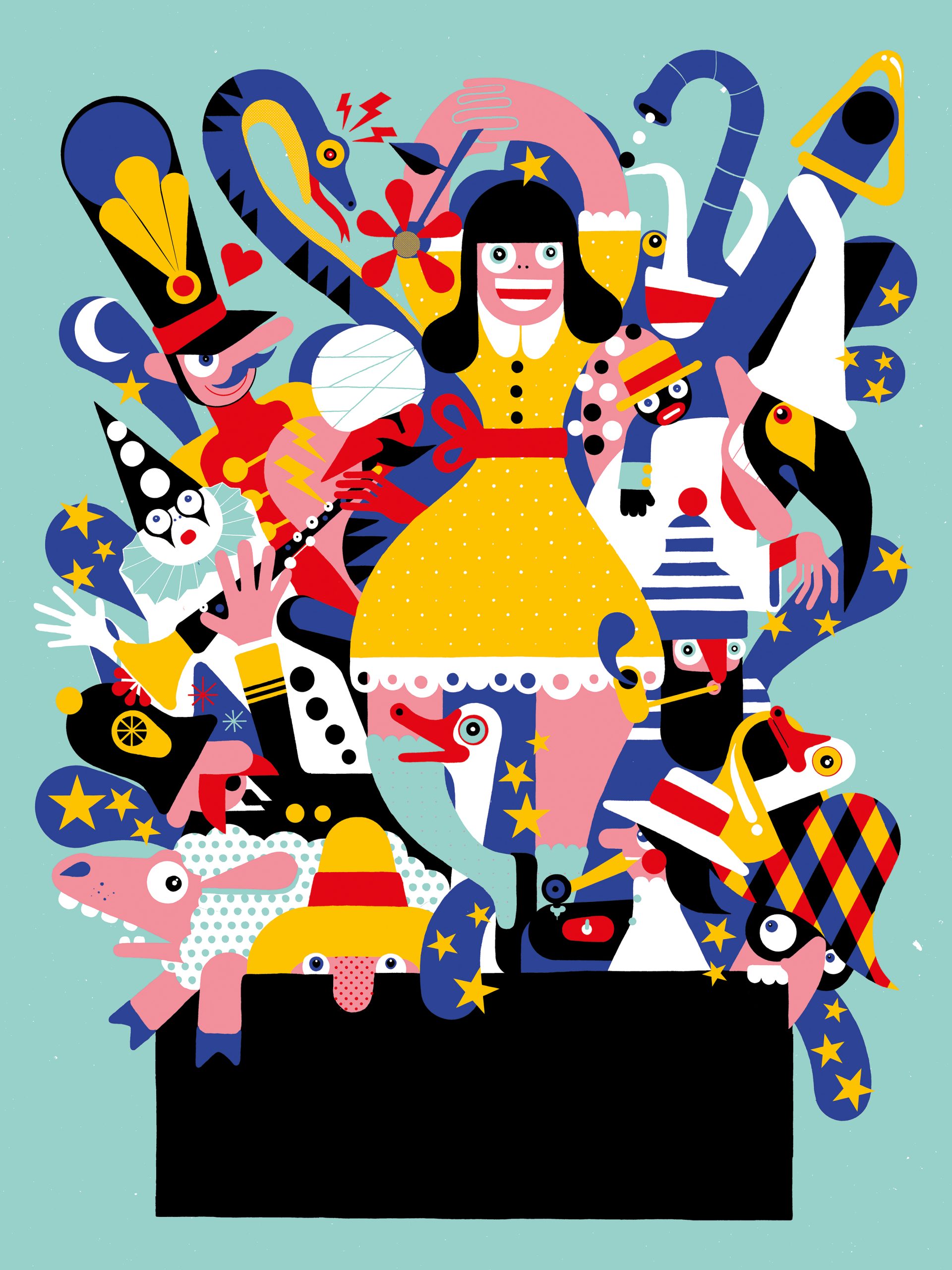
La boîte à Joujoux…
…is a “ballet for children” by Claude Debussy, based on an illustrated children’s book by André Hellé, who also produced the illustrations for the original score.
Composed for piano in 1930, the work is dedicated to the composer’s daughter, Claude-Emma, known as Chouchou.
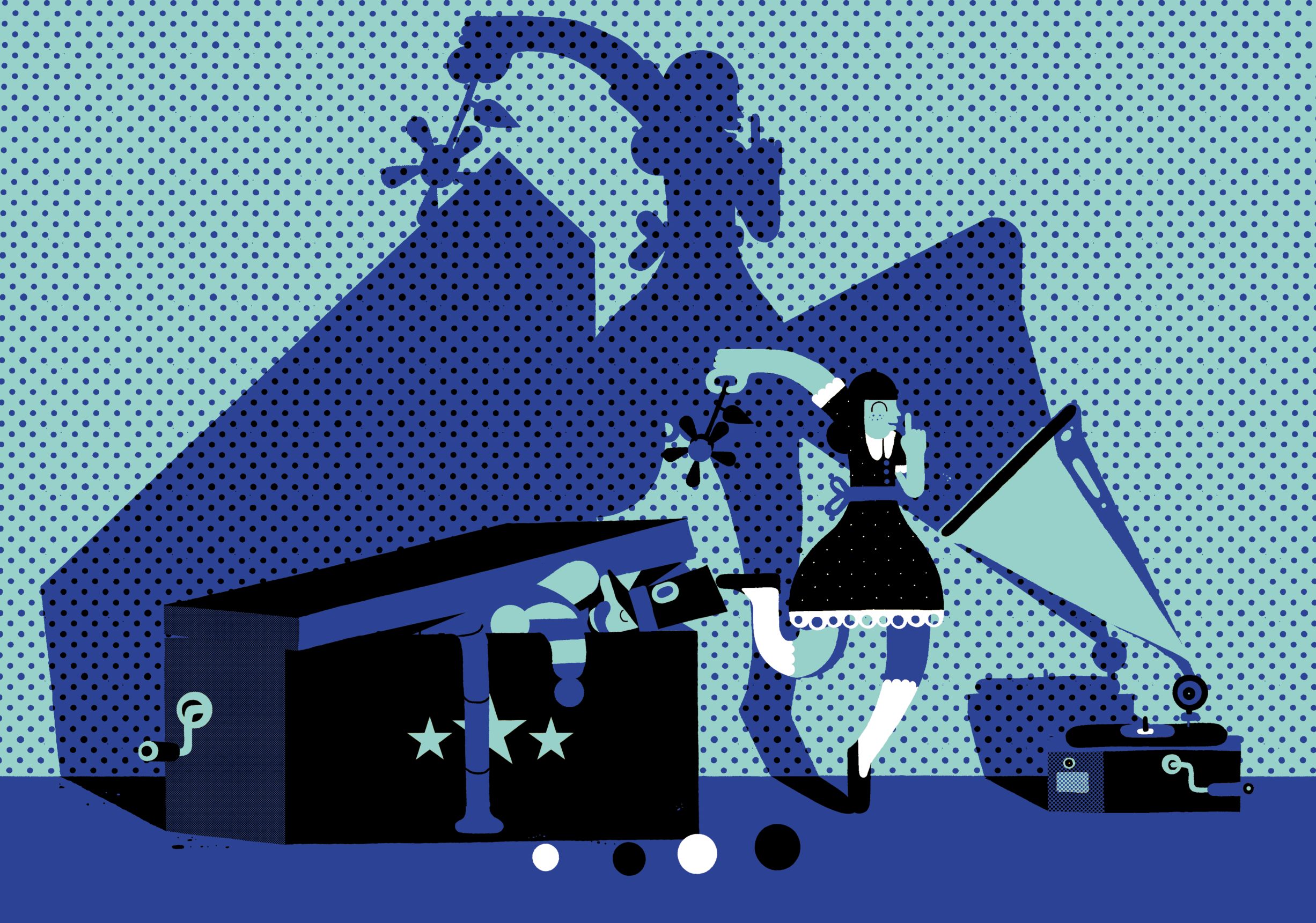
PRELUDE
Imagine a box full of toys who are fast asleep. A doll dreams of being a ballet dancer! And a wooden soldier imagines, in his dreams, that he is fighting a battle!
Sometimes, when the farmer’s family are sleeping, the toy box springs open and there is chaos. The sailors come out first, singing and joking; the wooden soldiers form a parade, and the policeman walks up and down, threatening the others with his truncheon. Even the elephant wants to join in. Imagine what could happen! The clowns, as you’d expect, aren’t going to be left behind and play all sorts of tricks on each other.
But tonight, everything is quiet, nothing moves. Then the doll, who dreams of dancing a waltz, creeps out of the box...
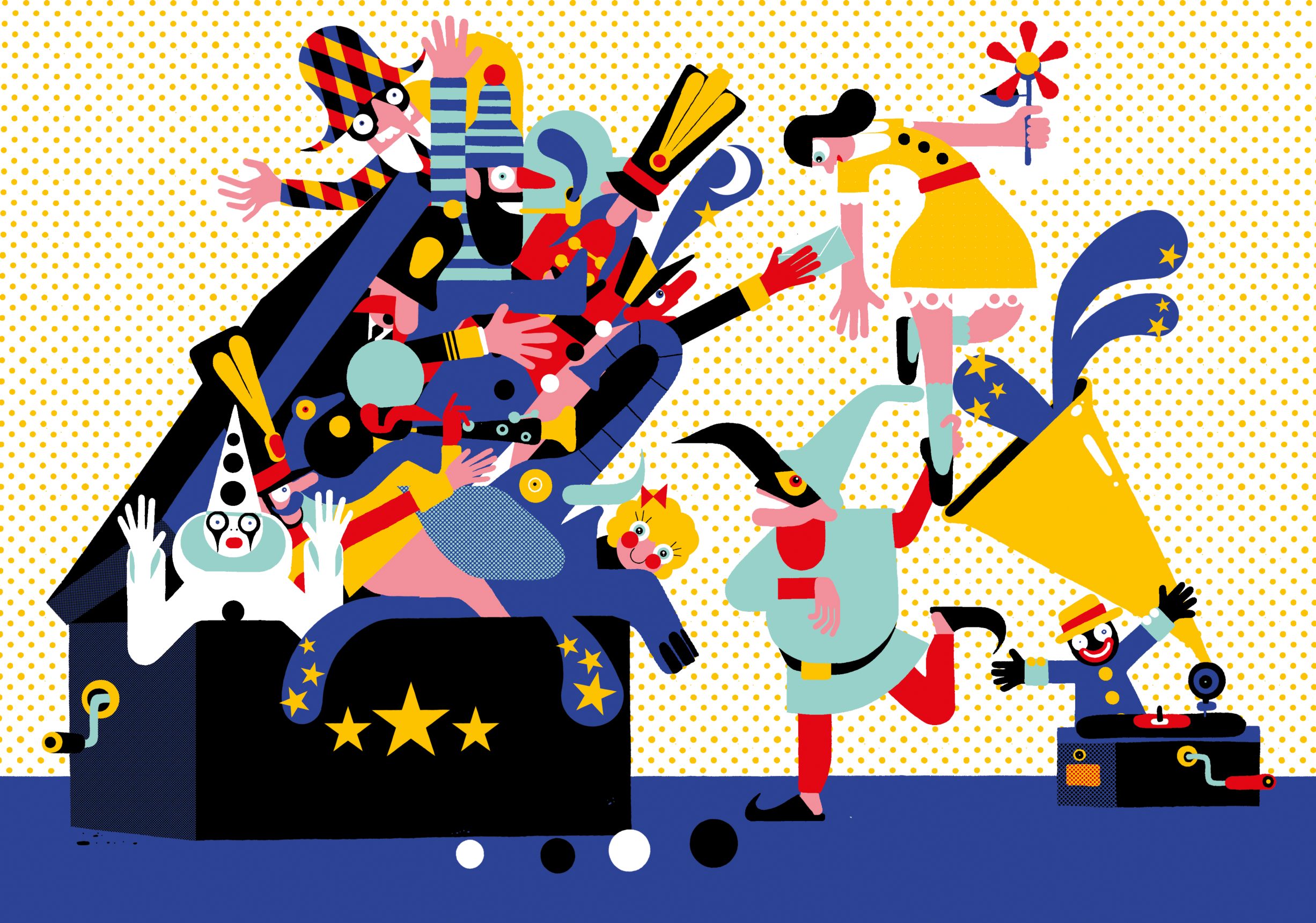
Scene 1
The Toy Store
She turns on the lights, goes over to the record-player... oh no, too loud! She hasn’t realised, and she wakes everyone up! The other dolls come out to see what’s happening. The clowns come out too. And the inevitable happens: all the toys begin to wake up. Even the soldiers, who always sleep very deeply. And, of course, the elephant has to join in. The snake charmer uses his magic oboe to hypnotise the elephant and make it come out of the box and follow him. The acrobats follow, doing somersaults and jumping over each other. The doll can’t dance with such a commotion.
Then a polite, good-natured soldier comes along, whistling a tune... The doll’s boyfriend also appears, an impudent clown. He’s very funny, but a bit of a rascal. What is he doing? He’s doing a new dance that he’s just invented. The postman arrives with a letter in his hand. Beware of the dog! The dog bites the postman’s leg but he delivers the letter and goes on his way as best he can.
All the toys huddle round to read the letter. The doll takes advantage of the moment to put on her ballet shoes, performs two pirouettes, and then, while everyone is distracted, starts to dance her favourite waltz. On tiptoe, she dances round and round, until she comes to the clown... he takes her hand and they dance the waltz together. But the shameless clown leaves her alone and goes off. Everyone applauds the doll’s dance. But where has the clown got to? Would you believe it? Now he is flirting with two pretty puppets. The scoundrel has left the doll on her own and is dancing with the two puppets. The doll tries to catch him as he passes by her but he makes fun of her, jumping so high he seems to be flying. The soldier, who has just arrived, is upset by the clown’s behaviour and goes to help the doll. She’s very angry and throws the flower she always carries onto the ground. The soldier hastens to pick it up and places it against his lips. The doll doesn’t notice the soldier’s gesture, she is carried away by the clown’s brilliant dancing. The soldier is sad because he has no time to declare his love to her: the bugler is summoning him to do his duty.
All the toys dance enthusiastically. They are so carried away by the dance that they don’t realise that it is getting lighter... and someone is approaching. “Look out! The sun’s rising. The children are up.” At that moment, all the toys - the elephant, the clowns and the puppets - jump into the box. They pretend to be fast asleep. When the door starts to open, the doll hurries to turn the light off. The clown has been the doll’s boyfriend for a long time but things aren’t going well. He is unfaithful and she’s getting tired of it. One day they are sitting under an old oak tree, whispering words of love.
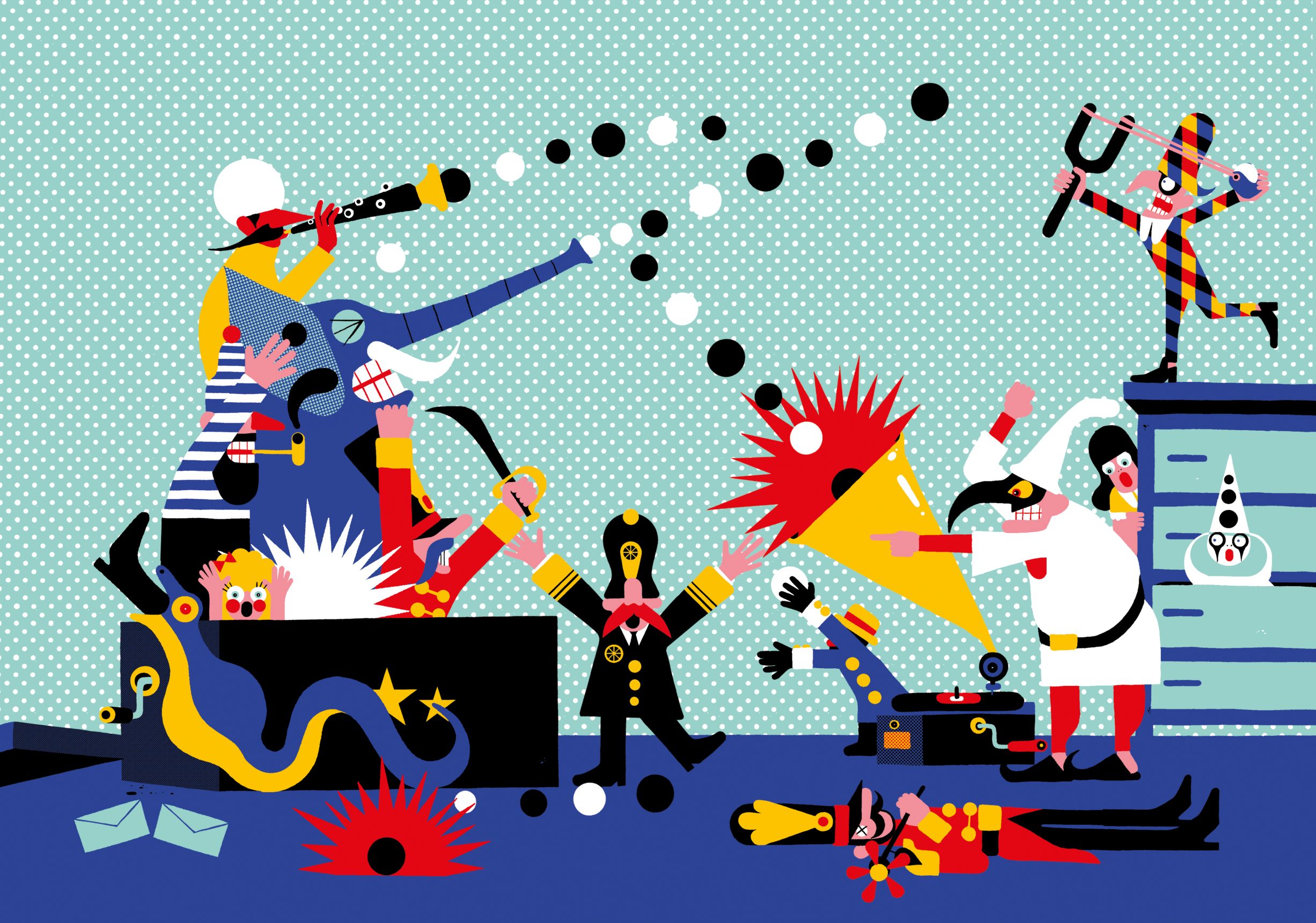
Scene 2
The Battlefield
The clown, as usual, is telling the doll how much he loves her, but he doesn’t mean it. She hopes one day he will ask her to marry him, but he never does! The clown only thinks of himself and doesn’t have the least intention of marrying anyone. To keep her happy, he gives her little kisses on the nose. “What’s that noise?”, they ask each other. “It must be...the enemy!”, says the clown. And just then the captain of the wooden soldiers appears, sword in hand. The doll runs away and the clown shouts: “Help! Help!” The soldiers are getting ready for a battle with the clowns. Then the clowns arrive, armed to the teeth. A fierce battle ensues. The first attack is with water pistols, but the clowns fire back using huge slings loaded with peas. After a time both sides think they have won and soldiers and clowns march off victorious.
That night, under the moonlight, the wooden soldier lies wounded on the field of battle. Beside him is the dancer’s flower, which he has picked up from the ground. A nurse approaches to take care of him. Who could it be? It’s the doll. But in the darkness the crafty clown also appears and creeps towards the soldier who is lying on the ground. The doll is so frightened she can’t speak. The clown kicks the soldier’s gun away, takes the flower and laughs at him: “You won’t be doing any more fighting,” he says scornfully, and, tossing the flower away, he vanishes into the darkness. The doll approaches the soldier, helps him to sit up and puts her arms round him to comfort him. “I don’t want anything more to do with him, he’s bad. I’ll stay with you.” Thanks to the dancer’s care, the soldier soon feels stronger again. Far away they can hear the celebrations of victory. But the two lovers prefer to snuggle up together under the light of the moon. The doll and the soldier get married. All the toys go to the wedding, except the clown, of course. But the couple have a new problem: it isn’t easy for them to earn a living, as the soldier is no longer fit to fight. The only thing the doll knows how to do is dance and, as everyone knows, a dancing doll can’t make much money. And they don’t have any property to speak of: a small farm with no sheep that the dancer has inherited from her family, her ballet shoes, the soldier’s uniform, and the flower that brought them together.
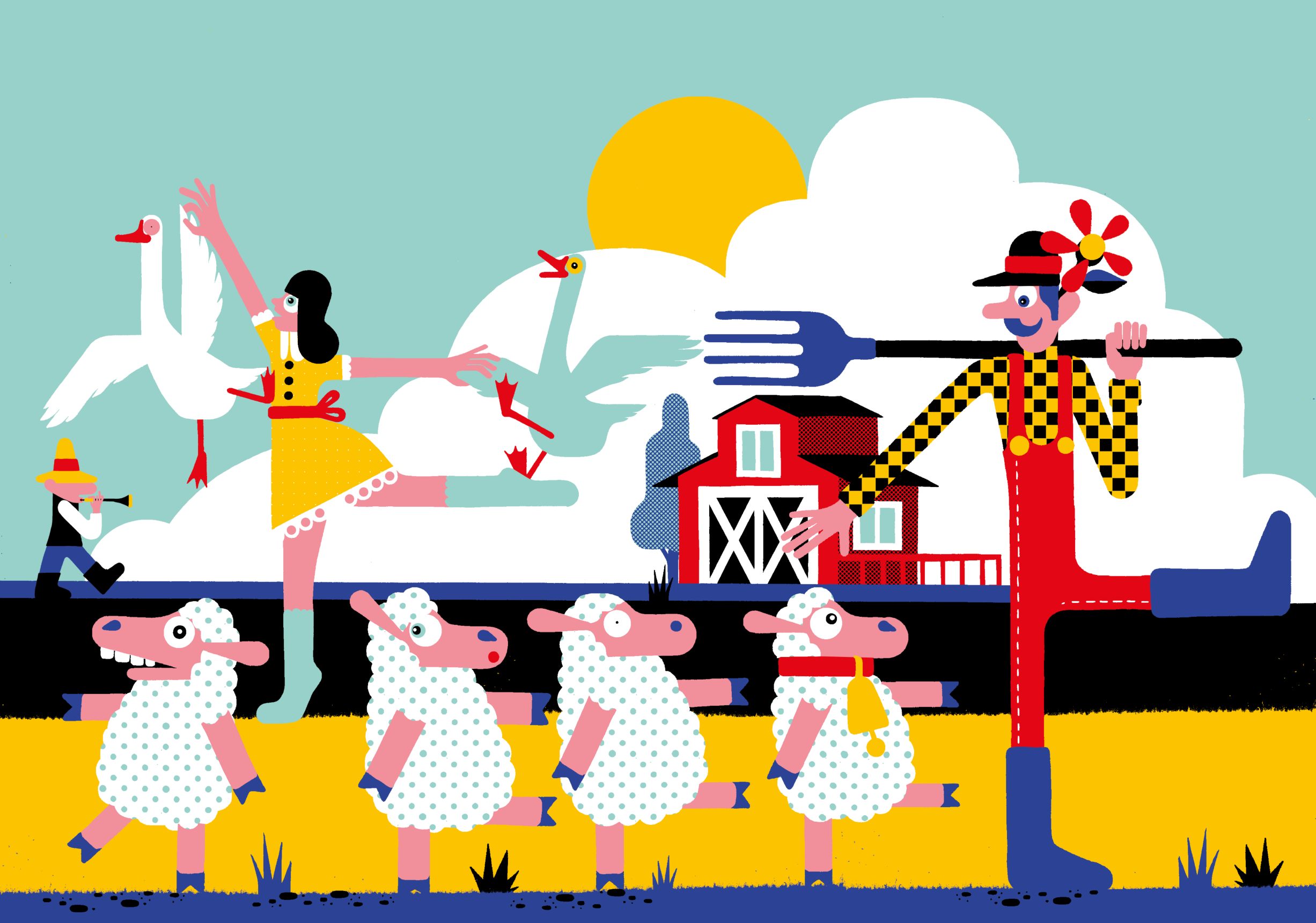
Scene 3
The Farm
Of course, you can’t run a farm on love alone. By chance, one day they hear a shepherd in the distance, playing his pipe. The soldier thinks: “What’s the point of a farm without sheep?” He sells his gun, his boots and uniform and uses the money to buy as many sheep as he can from the shepherd.
One day a girl passes by with a gaggle of geese. The doll persuades her to give her two geese in exchange for her ballet shoes. It’s a deal! Little by little, the farm is filled with sheep, geese, hens and cockerels. They don’t have much money but they are happy... So much so that they don’t take any notice of the shepherd’s sad tunes. They walk peacefully in the moonlight, holding hands.

Scene 4
After Making a Fortune
For the soldier, the army is a thing of the past. The doll has put dancing behind her, too, and works hard breeding geese. And they have lots of children and hold parties for them, where they all dance the polka, directed by their mother.
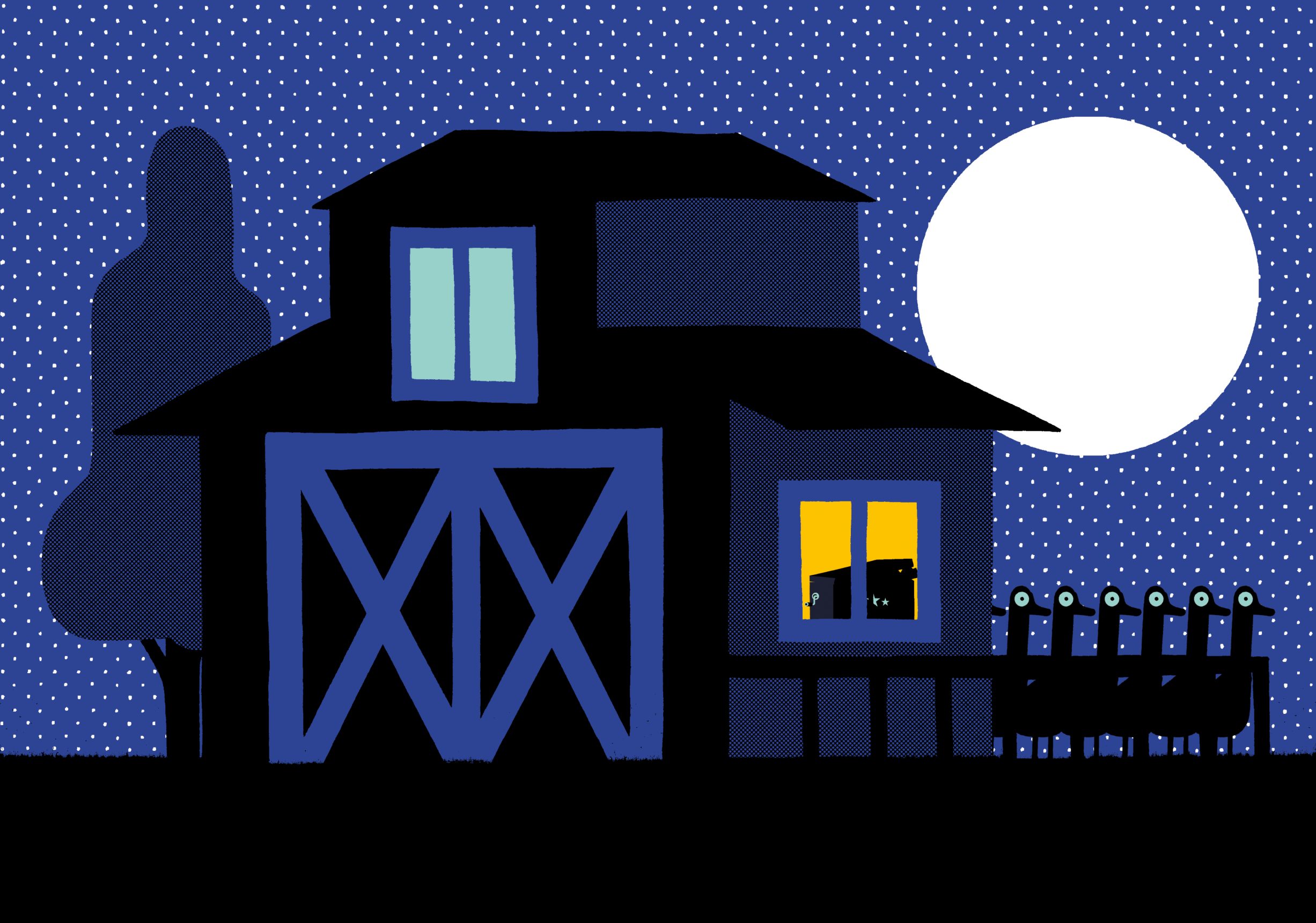
Epilogue
If you look carefully now, you’ll see the soldiers, postmen, clowns, acrobats, dancers and farmers all waving goodbye to us in the silence of the night.
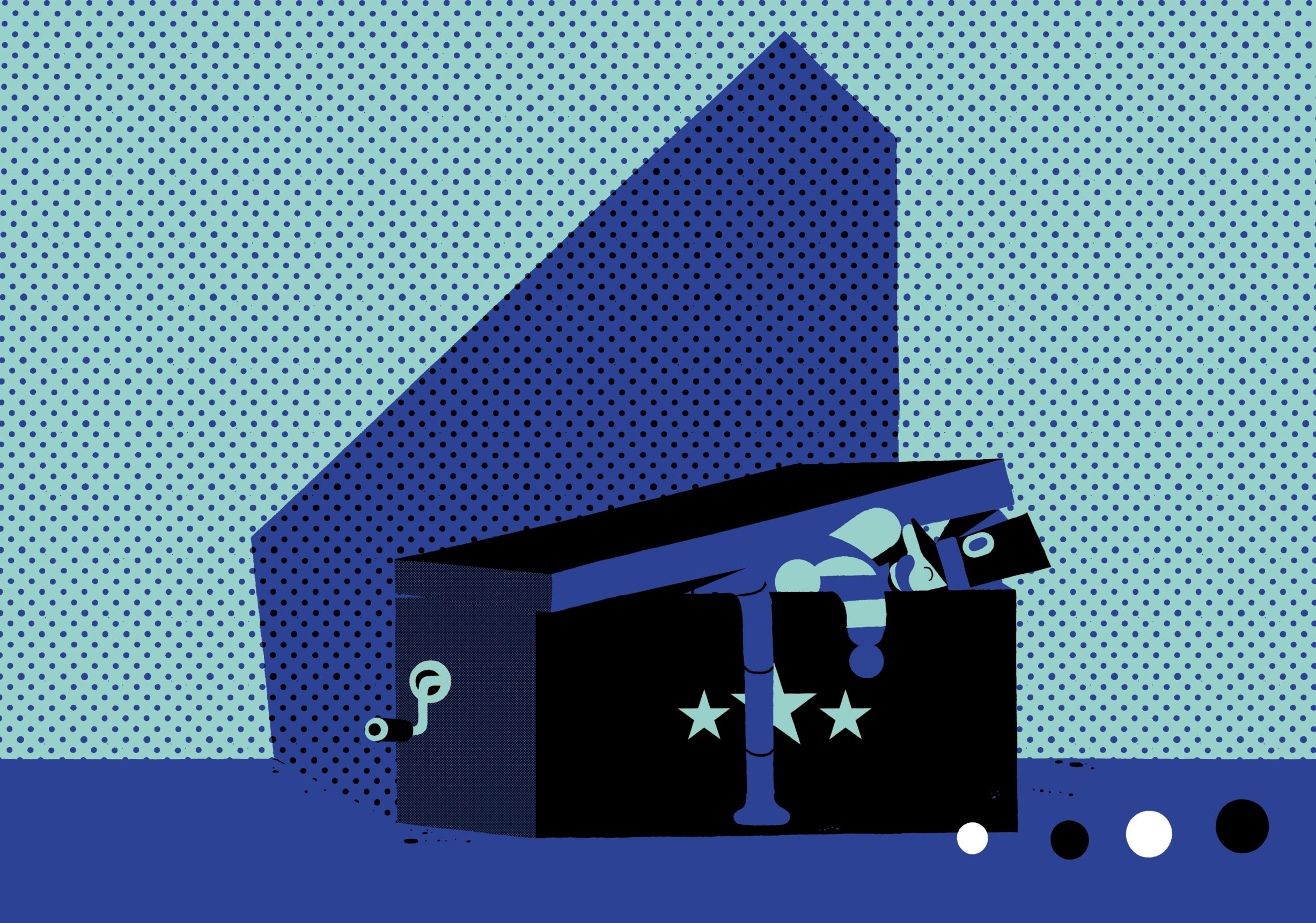
MATERIALS
Hand programme
The hand programme is designed by Daniel Montero Galán to be used as a toy. On this page you’ll find a link that takes you to a template so that you can make the Four Shoemakers game, using origami paper folding. Note that you need to print the template on two sides. We recommend you use A3 paper if possible but A4 also works.
In the Four Shoemakers game you will find our three main characters, the doll, the clown and the soldier, and there is one additional character, the policeman. When you’ve assembled the game, you can invent different ways of playing. Here are some examples:
- In pairs, you can use some of the tunes with words we have suggested in the teaching guide to “open and close” the Four Shoemakers game. When the song ends, the child who doesn’t have the Four Shoemakers raises one flap and the other has to guess which character is under it.
- You can also play with the audio recordings of the concert.
- You can perform a dance, playing the role of the last character to appear in the game.
VIDEO: PARTICIPATORY MOMENT TUTORIAL
TEACHING GUIDE, MASKS AND PUPPETS
Download the Toy Box masks and puppets. The puppets have to be cut out and attached to a stick. See the project teaching guide.
CREDITS
Barcelona Symphony Orchestra
Beatriz Fernandez, musical direction
Marta Pazos, stage direction, scenography and dramaturgy
Blanca Pujol, pedagogical director
Ester Guntín, choreography and assistant director
Nuno Meira, lighting design
Joan Ros, costume design
Claudia Vilà, scenography assistant
Dancers: Laia Duran, Glòria Garcia Garrido, Mariona Moranta, Julia Romero
De las flores / Juan Carmona Román, constructor de l’escenografia
Aida Mayoral, estudiant en pràctiques (Institut del Teatre)
Daniel Montero Galán, illustrator
